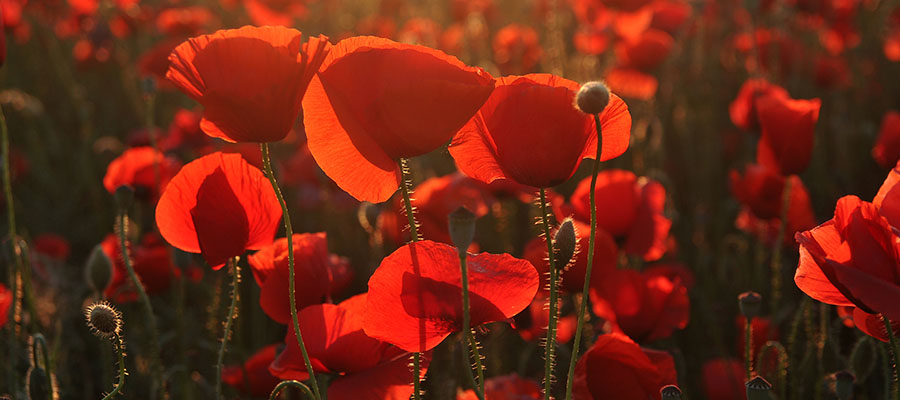The ANZAC story: Gallipoli and what we can take from it today
By Andrew Dunbar | 22/04/2022

ANZAC Day is one of the most important days on the Australian calendar, a day when we remember and honour our servicemen and women who’ve helped protect the wonderful country and way of life we enjoy today. It’s a day to celebrate the everyday Australian values – mateship, courage, and selflessness.
Each year I write an ANZAC Day post, and previously I’ve shared the stories of famous and victorious Australian battles, such as the battle of Villers-Bretonneux and ‘The rats of Tobruk’.
This year, I want to talk about one of the most well-known conflicts in our history: Gallipoli.
At a time when our free values are again being threatened, I’ve been reflecting on the birth of the ANZAC legend and what it represents. It was born on 25 April 1915, and after eight months of fighting in Gallipoli, it was reaffirmed.
Although there was no military victory, the Australians displayed great courage, endurance, initiative, discipline, and mateship. Such qualities came to be seen as the ANZAC spirit and are still alive today with our “have a go” attitude and commitment to looking out for one another.
A strategy to knock Ottoman Turkey out of the war
The Gallipoli campaign was the land-based element of a strategy intended to allow Allied ships to pass through the Dardanelles, capture Constantinople (now Istanbul) and ultimately knock Ottoman Turkey out of the war.
A fateful morning
On 25 April 1915, 16,000 Australians and New Zealanders, together with British, French and Indian troops, landed on the Gallipoli peninsula. The men made the last part of their night journey in 36 rowing boats. As the boats grounded, the men jumped out. Some landed in deep water, where they drowned. Most struggled ashore, soaking wet and weighed down by their rifles and sodden packs. There was initial confusion about where exactly they had landed, for above them towered a steep cliff-like landscape. They had landed north of their intended target at a small beach that became known as ANZAC Cove.
I visited the site almost 20 years ago to better understand their experience. My journal notes at the time describe the steep landscape they faced as “simply staggering”. Although only initially guarded by some 160 Turks (it took six hours for Turkish reinforcements to arrive), the terrain made it simply impossible.
Hundreds of Australians started to climb what was later known as Plugge's Plateau, their first major obstacle on the peninsula. It was not easy. The wounded or killed slid back down the slope until stopped by the scrubby bushes. The men dug their bayonets into the earth to help them climb.
From the top of the plateau, Turkish defenders kept up a steady fire. Small, isolated groups of soldiers managed to make their way upslope, but were beaten back or killed by ever strengthening counterattacks.
Protracted fighting leads to a deadlock
Ferocious Turkish resistance over the ensuing months resulted in protracted trench warfare through forbidding scrubby slopes and ravines, with heavy casualties on both sides. The unhygienic conditions for soldiers on Gallipoli caused serious illnesses too. As the campaign moved into summer, more men were evacuated because of illness than wounds sustained during the conflict.
From the campaign's earliest days, the Turks clung grimly to the high ground. The Allies could not advance against the higher-positioned Turks. The Turks could not force the Allies back into the sea.
In August 1915, a reinforced Allied force of 11 divisions tried to break the deadlock with an assault on Ottoman forces.
At Lone Pine, the ANZACs were successful after days of intense trench fighting.
At the Nek, two Australian Light Horse brigades were cut down as they tried to cross no-man's-land and seize the Ottoman trenches. On my visit, I was in disbelief at how close the line was. It was suicide.
The New Zealanders, too, launched an assault against the hills around Chunuk Bair, north of Anzac Cove. Both this attack and the British landing at Suvla Bay failed.
The battle returned to a stalemate.
Finally, senior British commanders decided to evacuate, successfully doing so in December 1915 and January 1916.
A defeat, but a testament to courage
Some military historians have judged the Gallipoli Campaign ill-advised, poorly executed and overall, of little or no significance in the wider war.
For Australia, Gallipoli has never just been about such hard-headed analysis, however accurate. In defeat, what mattered was the quality of those who endured those long months of struggle, danger, ill-health and loss. Then, as now, what enabled soldiers to cope with the hell around them were the attributes of courage, discipline, endurance and humour.
Bonds forged that continue today
8,709 Australians, 2,701 New Zealanders and more than 86,000 Turkish soldiers died at Gallipoli, a devastating loss that shaped national consciousness in all three nations.
Such loss created bonds of solidarity between the Turks and Australians and has shaped the respect and friendship which has evolved over time.
As Vedat Acikalin, a Turkish-Australian, noted, “As a child, we grew up with the stories and songs of Canakkale. But I had no idea until I arrived in Australia in 1973 how important the same campaign, the same battles, were for this country as well. For the losing side, it was the birth of a legend.”
So, this ANZAC Day, remember the Australian qualities of courage, endurance, initiative, humour and mateship displayed by those original ANZACs. It is a timely reminder of values that we can live today to help us face the challenges presented by global conflict, pandemics, fires and floods.
I pay tribute to those incredible ANZACs and all our servicemen and women pre and post. I hope you will join me in taking time out to remember them this ANZAC Day.
Lest we forget.
General Advice warning
The information provided in this blog does not constitute financial product advice. The information is of a general nature only and does not take into account your individual objectives, financial situation or needs. It should not be used, relied upon, or treated as a substitute for specific professional advice. Apt Wealth Partners (AFSL and ACL 436121 ABN 49 159 583 847) and Apt Wealth Home Loans (powered by Smartline ACL 385325) recommends that you obtain professional advice before making any decision in relation to your particular requirements or circumstances.









